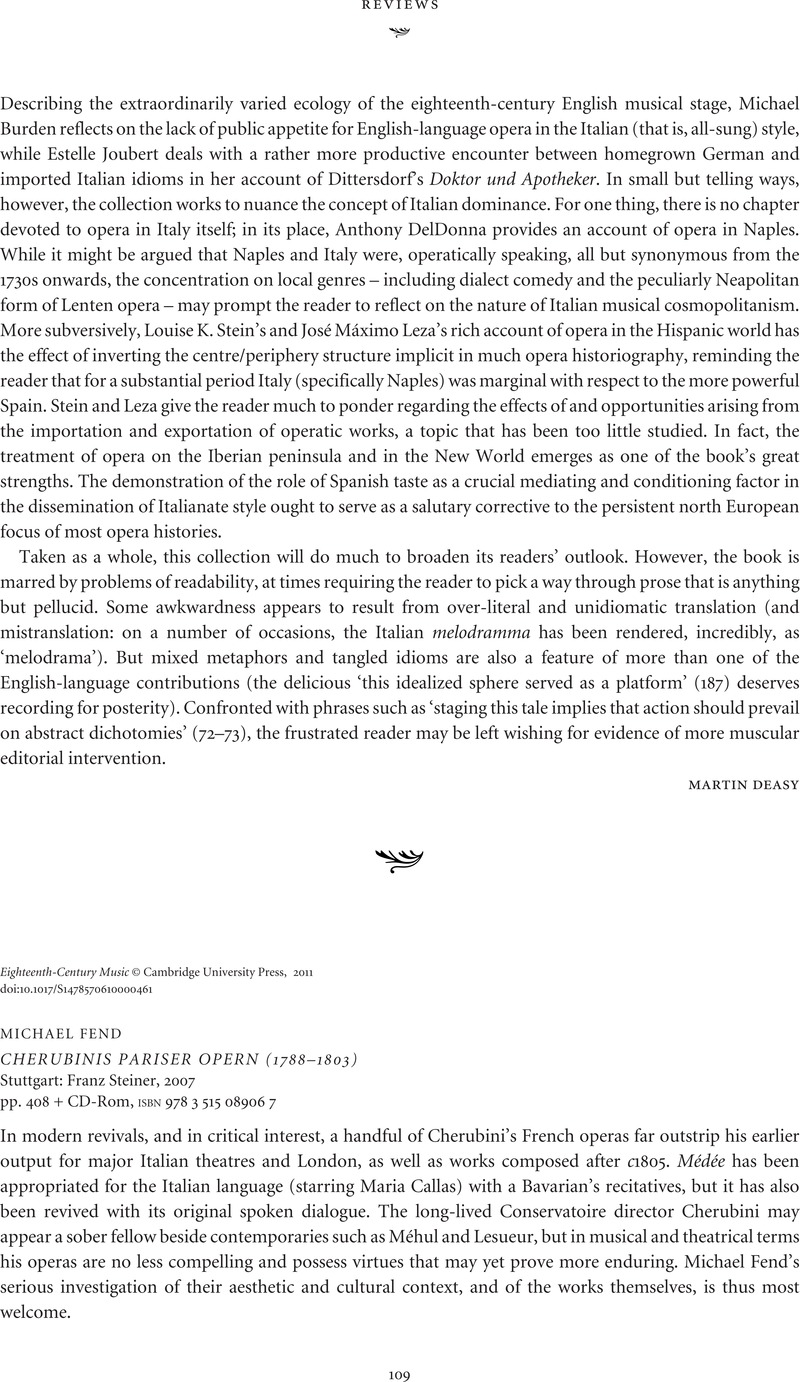No CrossRef data available.
Article contents
MICHAEL FEND CHERUBINIS PARISER OPERN (1788–1803) Stuttgart: Franz Steiner, 2007 pp. 408 + CD-Rom, isbn 978 3 515 08906 7
Published online by Cambridge University Press: 11 March 2011
Abstract
An abstract is not available for this content so a preview has been provided. Please use the Get access link above for information on how to access this content.

- Type
- Reviews: Books
- Information
- Copyright
- Copyright © Cambridge University Press 2011




